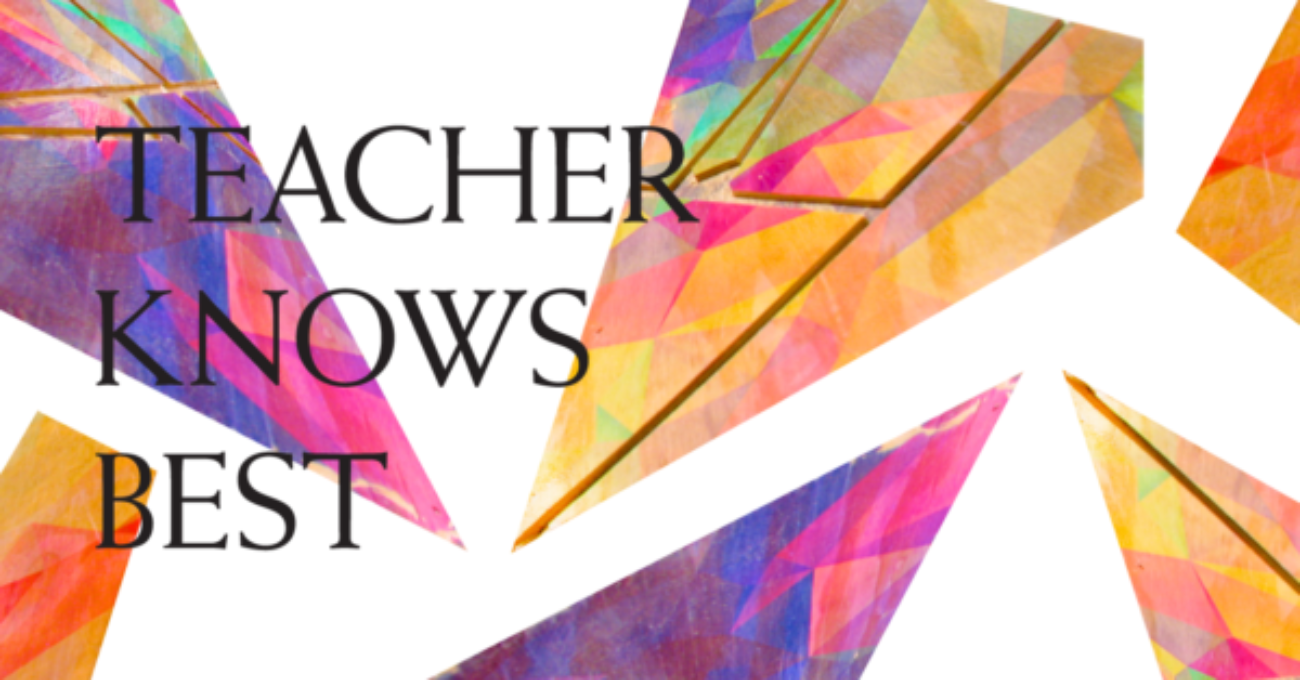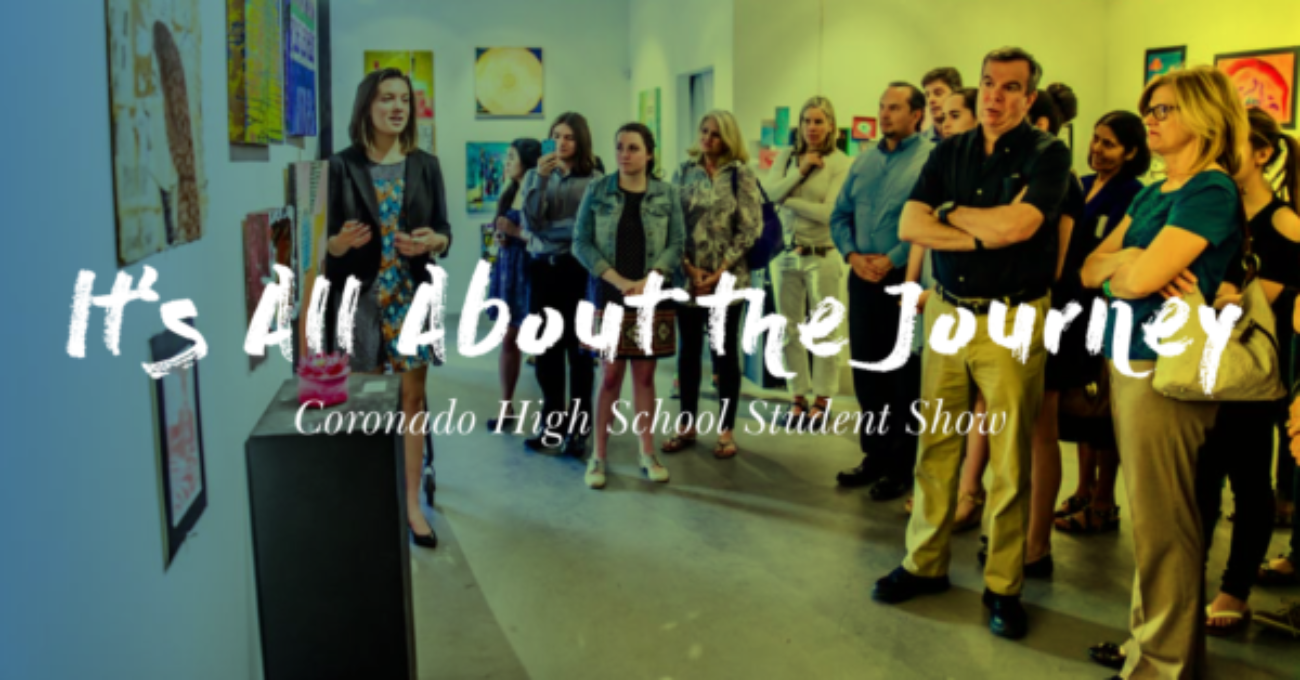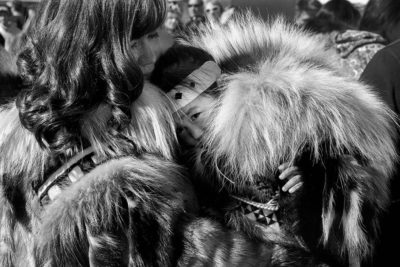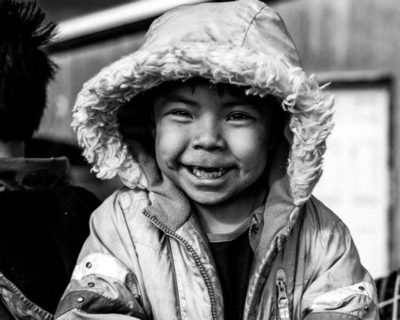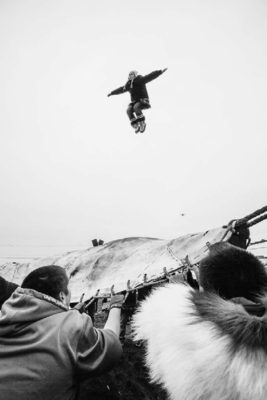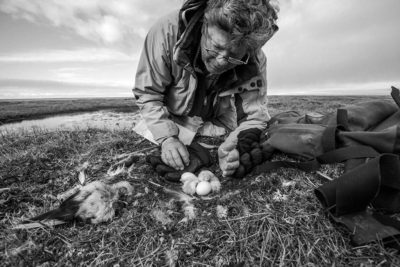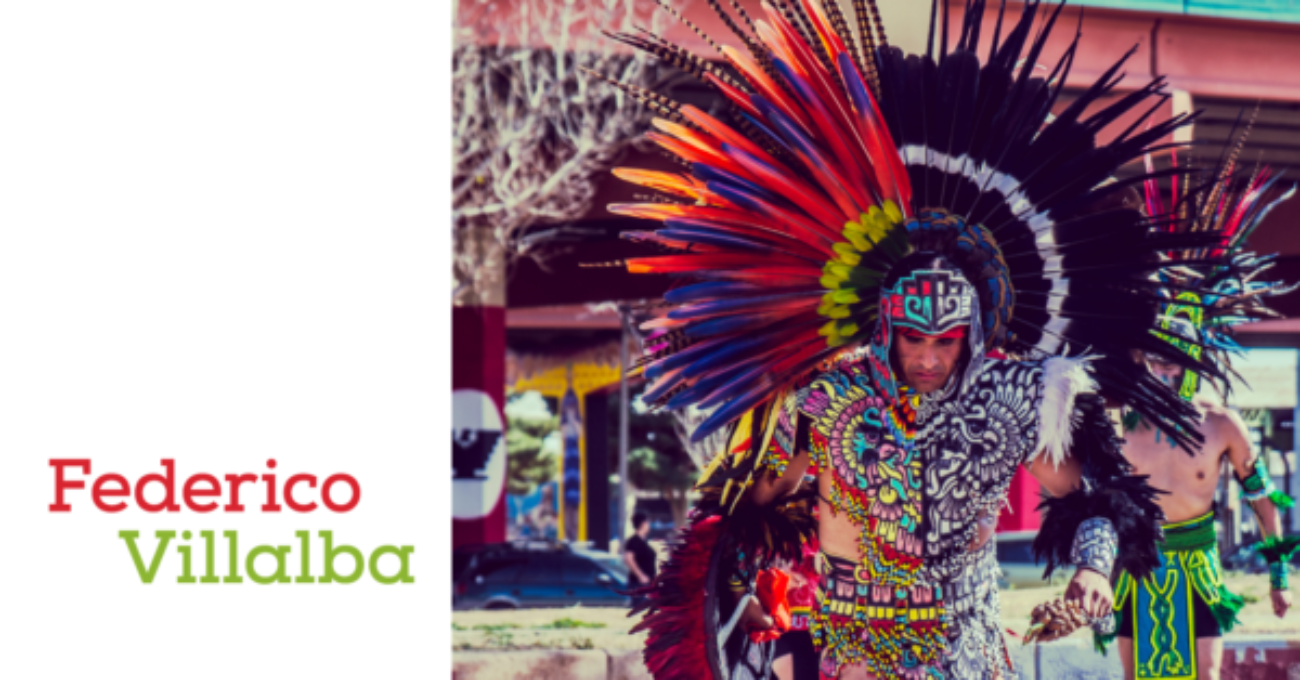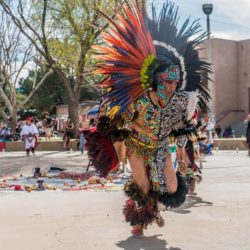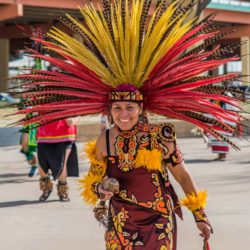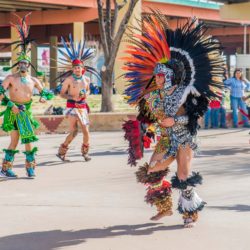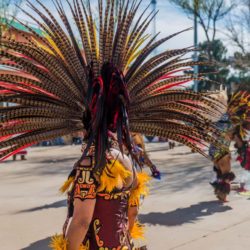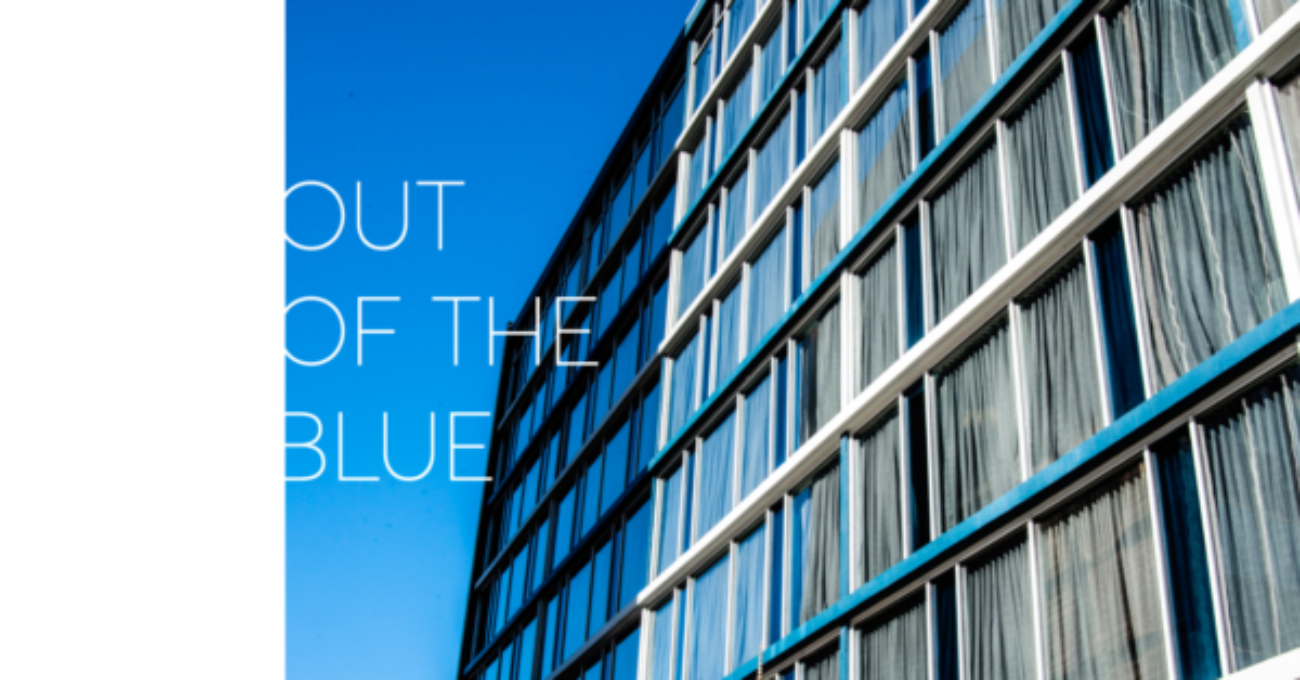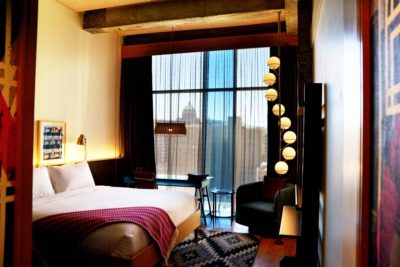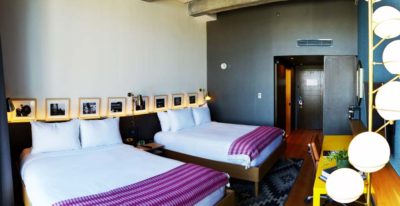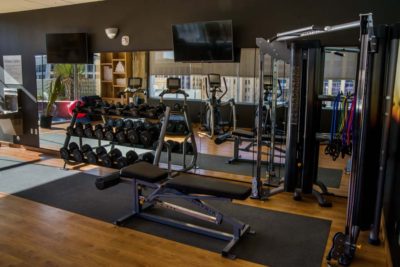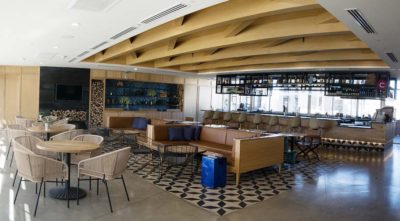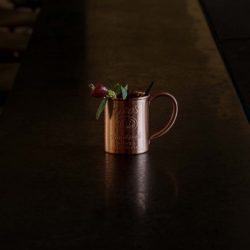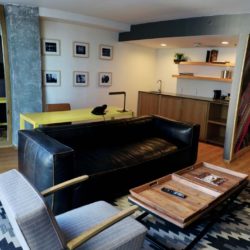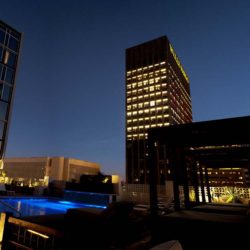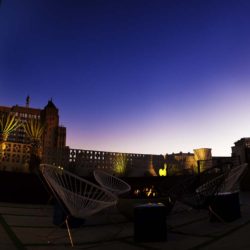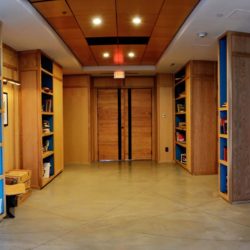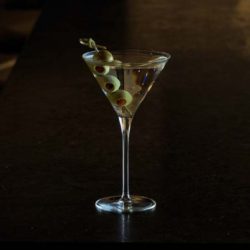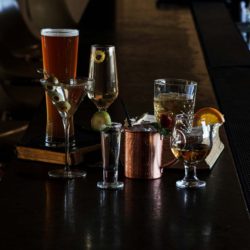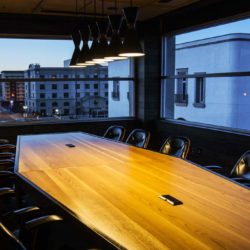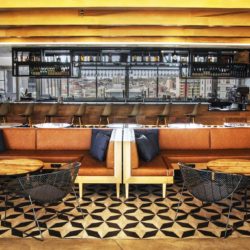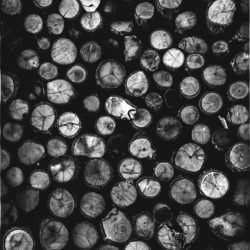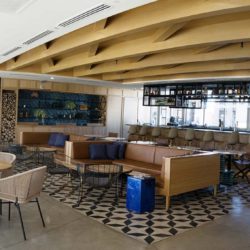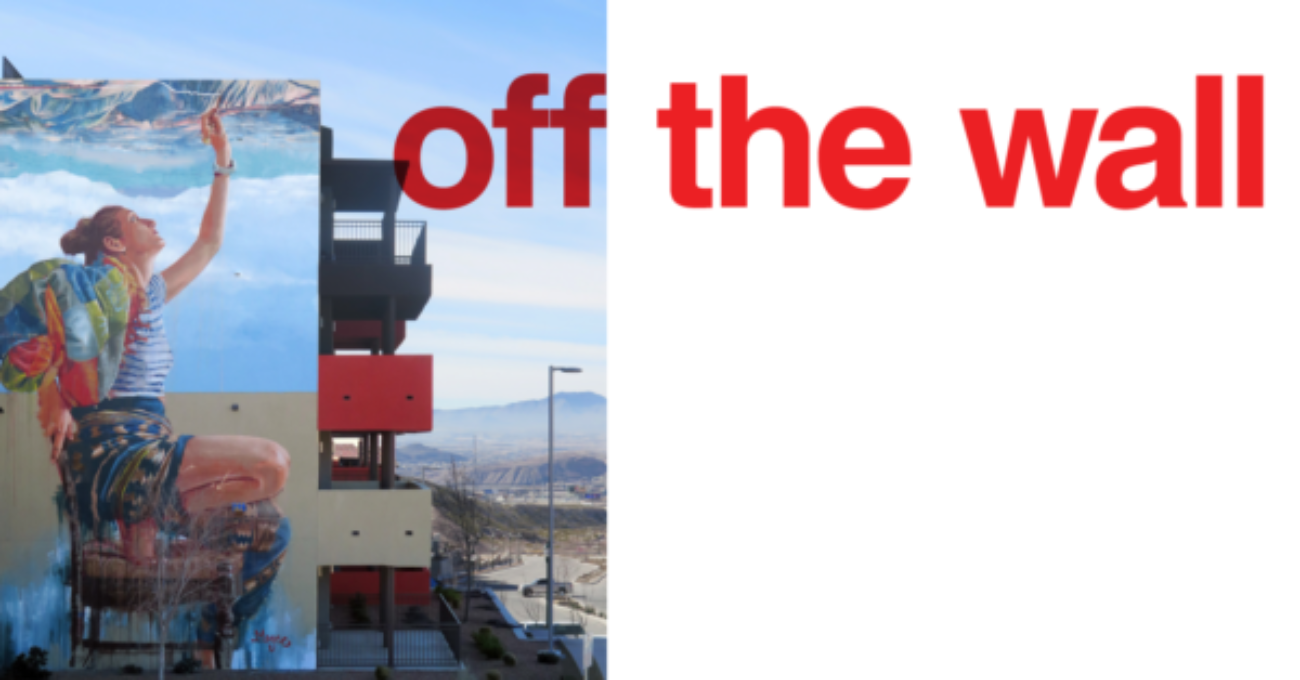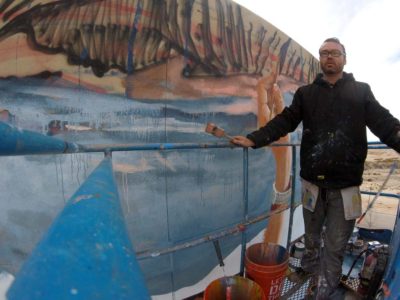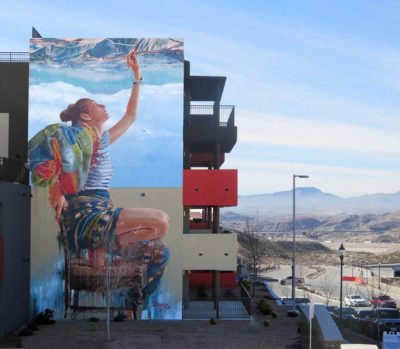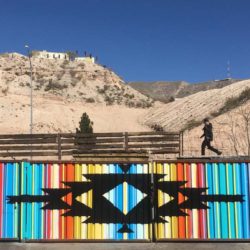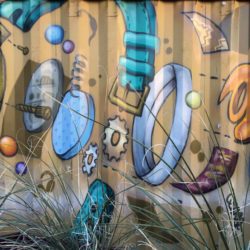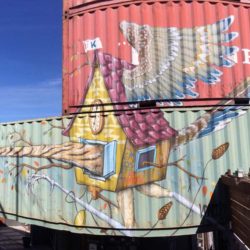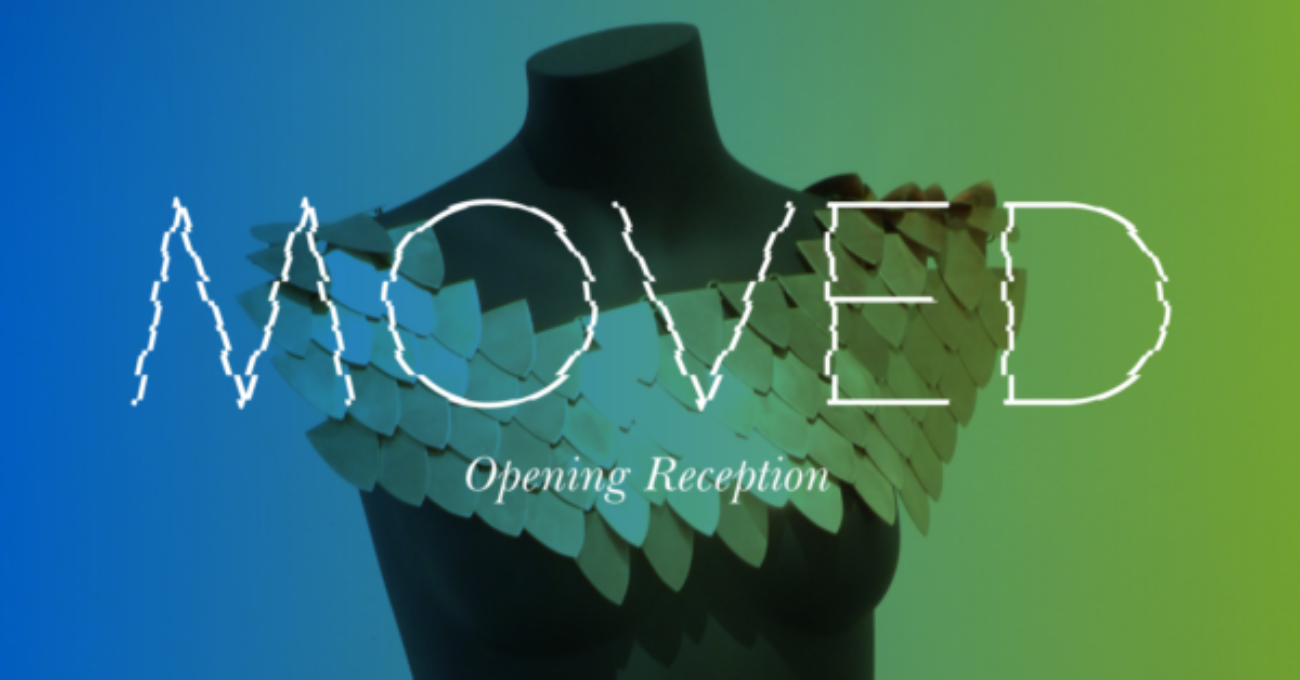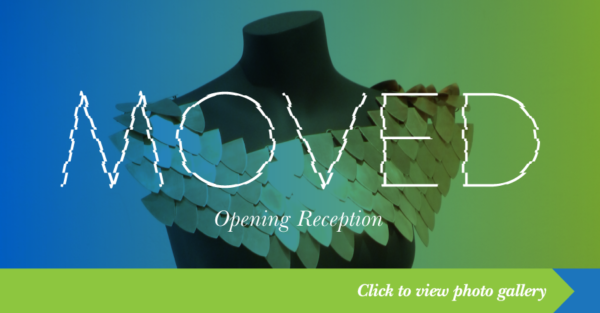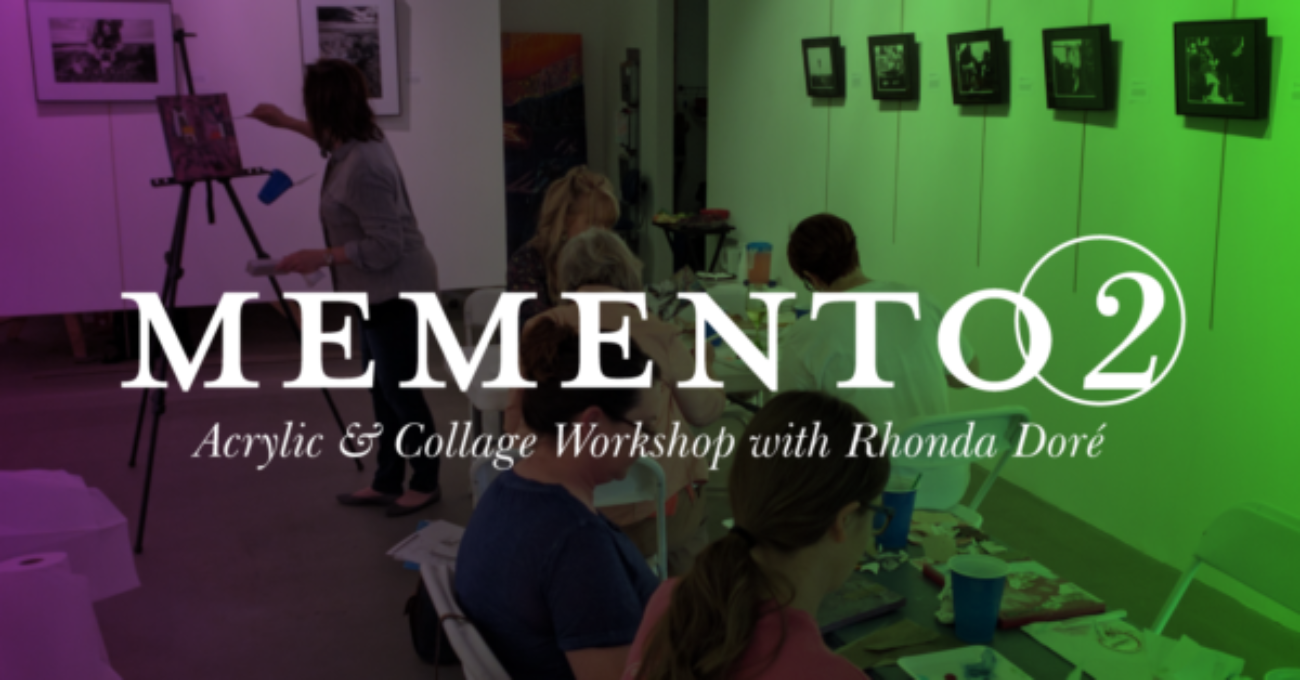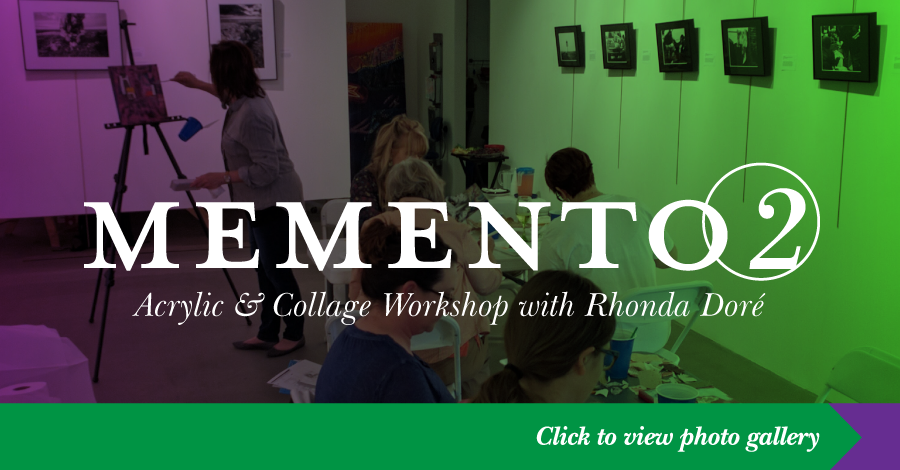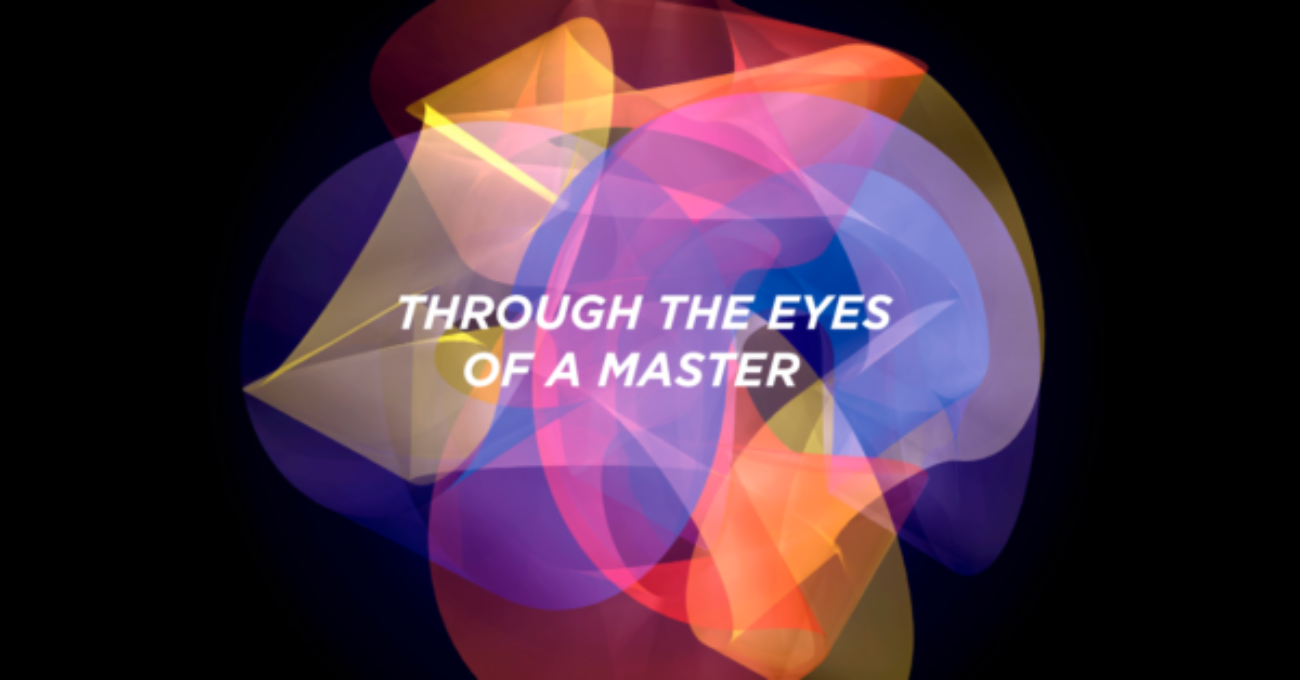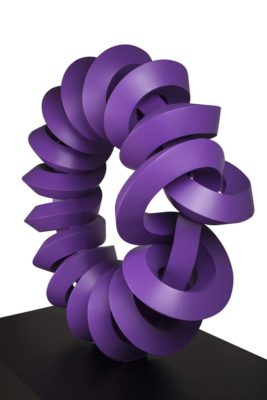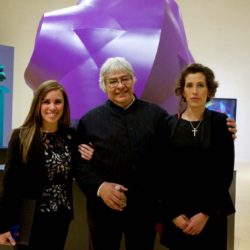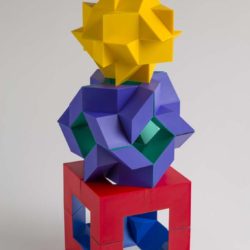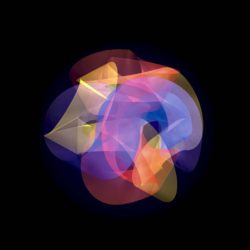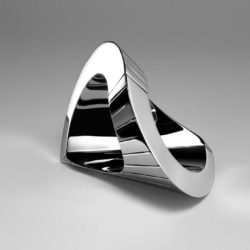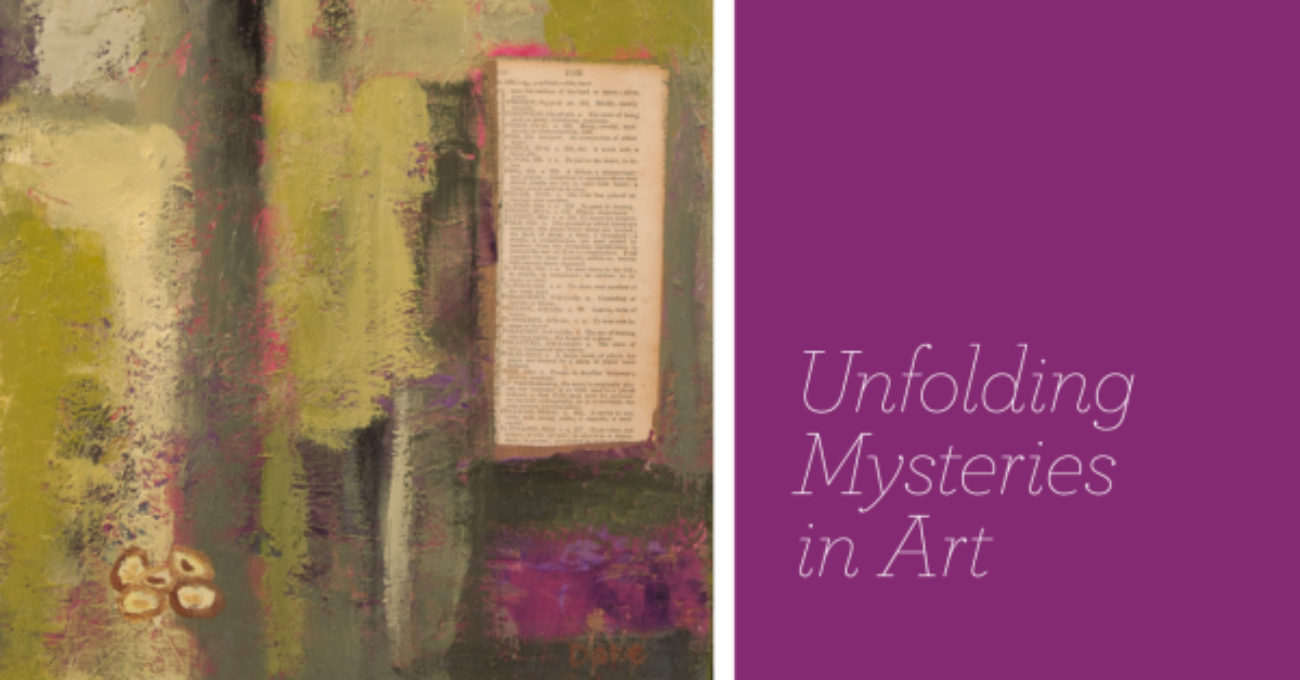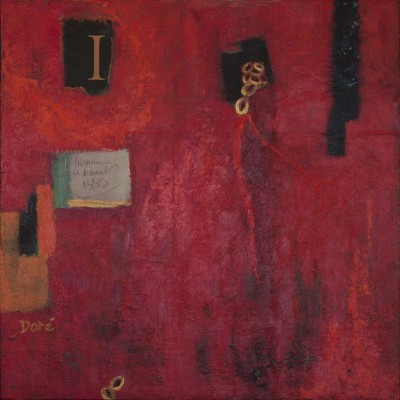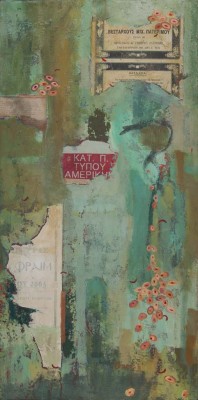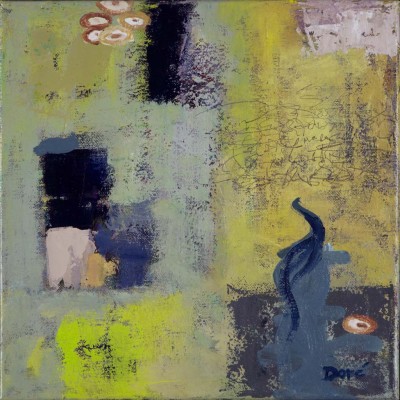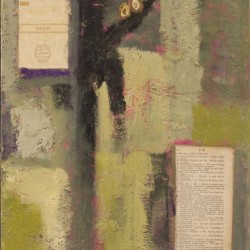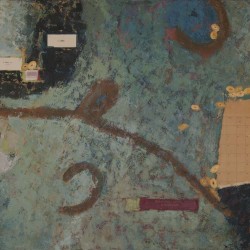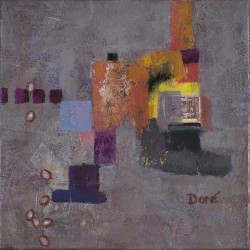Teacher Knows Best
Gunshots reverberated throughout the Rubin Center sending some visitors searching for the exits while others were seemingly drawn to the chaos. “The Sword in the Stone,” an interactive installation designed by artist and professor Angel Cabrales was the reason for all of the commotion that took place at the University of Texas at El Paso’s 2016 Biennial Faculty Art Exhibition.
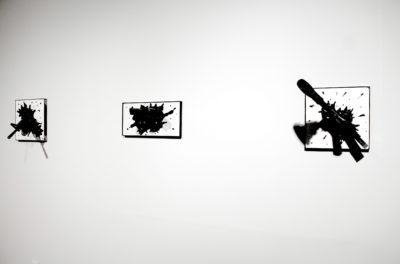
Cabrales, one of 26 faculty members that showcased artwork in the exhibit held March 16-April 23, created a massive black stone made of concrete and steel and was installed in the middle of the gallery with a gun built into the center of the piece. The gun was a confiscated weapon donated by the El Paso Sheriff’s department that had been destroyed and reassembled to reference a real gun for this exhibit. While one attempted to pull out the gun from its encasement—engraved with the phrase “If you be worthy to have me by your side you can be the greatest knight”— the trigger would engage, simulating the blast of a gunshot.
“The hero complex combined with the story of becoming the greatest knight from King Arthur felt like a perfect blend. Asking the viewer to attempt to be the hero when in reality they are making themselves a target, not only by the shooter, but by the officers responding, as they would not know who the ‘good guy’ is. Every knight ‘worthy’ in my piece ultimately is met by a gunshot before they can fully draw the weapon,” said Cabrales.
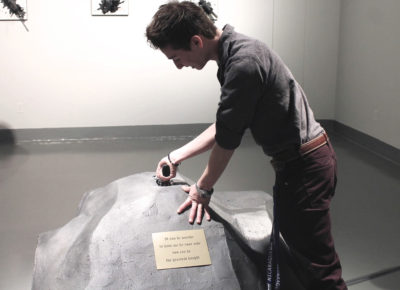
mixed media, 2016
This year’s show focused on examining the creative life of working artists. The exhibit premiered on March 16 and exhibited for a month, showcasing ceramics, metals, sculpture, painting, printmaking, drawing and graphic design.
Touching artwork is usually taboo, yet this year’s exhibit presented various pieces that called for audience participation. Davinia Miraval’s “Do Not Say A Word” called upon the viewer to actually eat the art. The piece included a curtain blocking the audience from a portion of the artwork and once inside the enclosed area, the guest was to pick a body part, an edible cutout made from rice paper, and on that paper was your secret. Once you choose that paper that closely spelled out your secret, you were to eat the paper [the secret.]
UTEP art student Sarah Aguilar felt the theme of the event echoed a cohesive relationship between professor and student. “It puts perspective into what they’re working on and what they expect from us so far, and seeing my own professor’s art really lets me see what they would want to see from us,” said Aguilar.
Kerry Doyle, director of the Rubin Center, hopes the show creates a deeper relationship between students and professors, while allowing an opportunity for professors to showcase their talent. “We do have a pretty big audience at the Rubin Center both on campus and off…so it’s great for faculty members to have an opportunity to show here and have their work exposed to a larger audience. It provides great showcase for their work,” said Doyle.
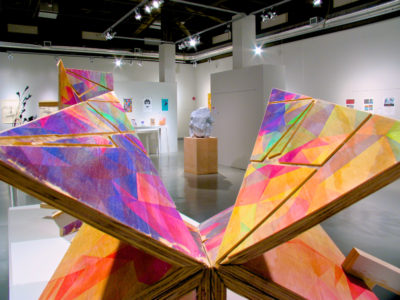
“Professors receive good feedback and are able to make connections within the community,” says Doyle. “We are having the faculty speak very casually about their creative life and again it provides a format that students wouldn’t otherwise come across in the classroom. They can talk about how hard it was for them to get their first exhibits, how they balance their work and artistic life.”
Aguilar echoes that thought, “I hope to gain knowledge from seeing someone that teaches me put out their artistic capabilities. Today we had a talk about that, exhibiting and putting your work out there. There really isn’t a class that I have taken that talks about that.” While art students are looking to gain insight into their professors’ artistic intuitions, the exhibit provides a contemporary art experience for non-students, who were encouraged to attend panel discussion with the artists.
“Being a university museum we are always thinking of every exhibition not as an end, but as a centerpiece for larger conversations. We care very much about the artwork we put up, but that’s not the end of it. It provides other kinds of relationship building and learning,” states Doyle.

